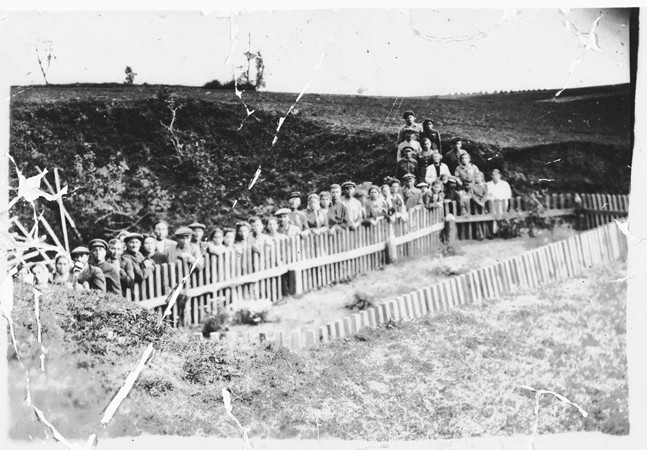
Tuvia Bielski
Despite great obstacles, Jews throughout occupied Europe attempted armed resistance against the Germans and their Axis partners. They faced overwhelming odds and desperate scenarios, including lack of weapons and training, operating in hostile zones, parting from family members, and facing an ever-present Nazi terror. Yet thousands resisted by joining or forming partisan units. Among them was Tuvia Bielski.
Key Facts
-
1
Operating in Western Belorussia (Belarus) between 1942 and 1944, the Bielski partisan group was one of the most significant Jewish resistance efforts against Nazi Germany during World War II.
-
2
Bielski group leaders emphasized providing a safe haven for Jews, particularly women, children, and elderly persons who managed to flee into the forests.
-
3
Under the protection of the Bielski group, more than 1,200 Jews survived the war.
Tuvia Bielski was born in Stankiewicze, in western Belorussia, in 1906. When Germany invaded the Soviet Union in June of 1941, Tuvia and his younger brother Zus vowed never to be caught by the Germans. Tuvia's extensive knowledge of the area saved his life, allowing him to move around frequently to avoid being captured by the Germans, who had a warrant for his arrest.
In early 1942, Tuvia began hearing rumors about partisans, and decided that if he and his fellow Jews were to survive, he must acquire arms and organize all-Jewish resistance groups. Along with two of his brothers, Zus and Asael, Tuvia began organizing Jews. By May of 1942, Tuvia was in command of a small group, which by the end of the war had grown to 1,200 people, and was known as the Bielski otriad (otriad is the Russian word for a partisan detachment). Tuvia had focused on saving as many Jews as possible, and would accept any Jew into his group. Many came through the family of Konstantin Kozlovski, a non-Jew, who provided shelter for Jews escaping from the Novogrudok ghetto and worked with the partisans to free hundreds of Jews from the ghetto.
The Bielski otriad carried out food raids, killed German collaborators, and sometimes joined with a Russian partisan group in anti-Nazi missions, such as burning the ripe wheat crop so the German soldiers couldn't collect and eat the wheat. Additionally, the Bielski otriad would seek out Jews in the ghetto willing to risk escape to the forest, and send in guides to help them.
By the summer of 1943, Tuvia was the leader of 700 people. In the Naliboki forest, Tuvia set up a functioning community, with everyone working to support the community in a variety of ways. There was a hospital, classrooms for the children, a soap factory, a Turkish bath, tailors, butchers, and even a group of musicians who played at festivals. Beyond meeting the needs of its own members, the Bielski otriad was able to provide services to other partisan groups in exchange for food and arms.
By the summer of 1944, the group had grown to 1,200. The group consisted mainly of the elderly, women, and children. Tuvia's group was the largest of the Jewish partisan groups.
A high percentage of those he led survived, due to Tuvia's strong and effective leadership, and his determination to save as many Jews as possible.
After the war, Tuvia moved first to Israel and later to the United States, where he died at age 81.
The amazing story of the Bielski partisans was turned into the motion picture Defiance in 2009.
Critical Thinking Questions
- What obstacles and limitations did Jews face when considering resistance?
- What pressures and motivations may have influenced Tuvia Bielski's decisions and actions? Are these factors unique to this history or universal?
- Research other partisan groups that resisted during the Holocaust.
- How can societies, communities, and individuals reinforce and strengthen the willingness to stand up for others?

